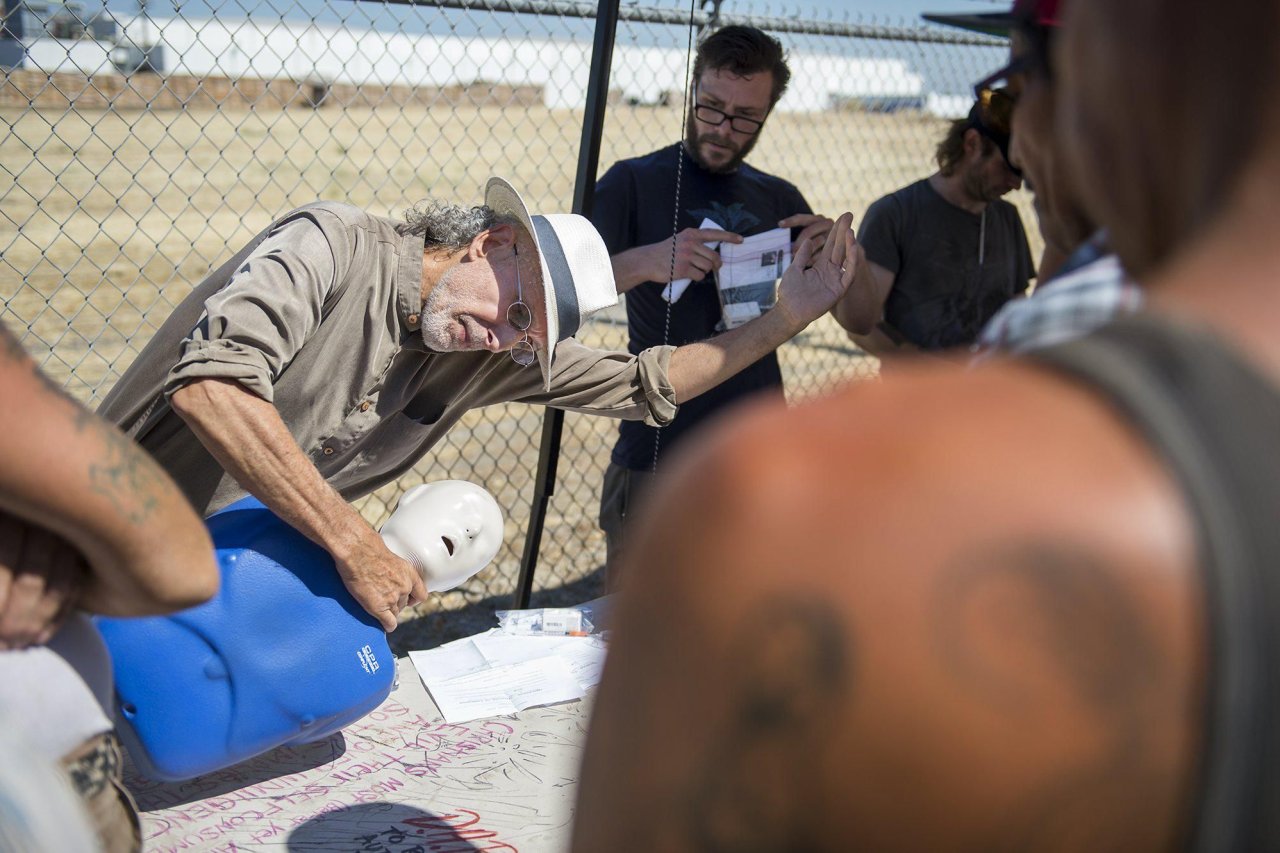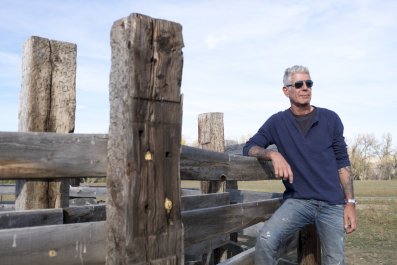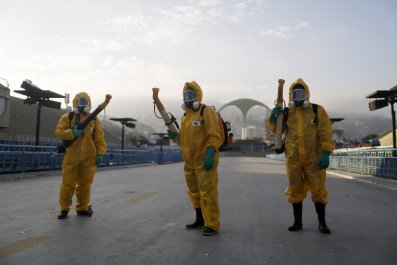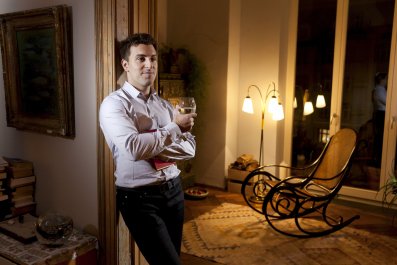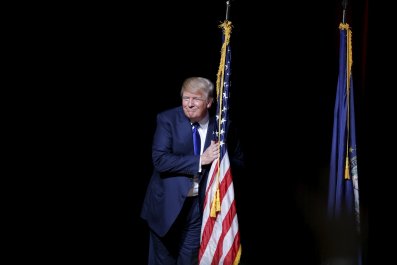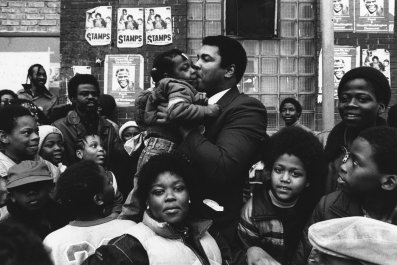Anytime her phone would ring at odd hours, Julie Stampler's stomach would drop. Her brother Jonathan had struggled for years with drug use, and she lived in constant fear of what news might be coming next. One night in late October 2003, the phone rang at 10:30 p.m., minutes after she'd put her kids to bed, and she steeled herself. Jonathan, then 32, had been dumped unceremoniously on the doorstep of Hialeah Hospital, 10 miles from downtown Miami. It wasn't far from her home, but the doctor on the phone said, "If you want to see him, you should hurry." She rushed over, but her brother was already in a coma.
Over the years, Julie's mother, Joy Fishman, had taken a "tough love" approach with her son, forcing him into drug rehab at 17, then cutting ties with him when he refused to change. When Jonathan was about 23, Joy briefly re-entered his life—she waited with him 24 hours to get emergency treatment at Jackson Memorial Hospital in Miami as he went into withdrawal. Joy was so incensed afterward—to her, it seemed that drug addicts were treated as the bottom of the triage barrel—that she called Channel 7News in Miami. She still remembers what her son told a reporter at the time: "If I don't stop using heroin, I'm going to die." Later, Jonathan was in and out of rehab. He told his sister he only snorted heroin, but in the late 1990s he was arrested for stealing needles and contracted hepatitis C—a sign of intravenous drug use. Then, in 1998, he cleaned up again and worked for the next few years as a drug counselor.
No one knows exactly what happened to him on that night in 2003, but his family slowly pieced a plausible story together: Jonathan told his girlfriend he was going to get high one last time. He injected what was probably a combination of drugs—heroin, cocaine, fentanyl, baby formula, no one knows for sure—inside his dealer's house. When he stopped breathing, someone drove him to the hospital, but no one rang the bell outside the emergency room, and by the time doctors saw Jonathan it was too late. After nearly a week, Joy was asked if she wanted to remove her son from life support. Overnight, as she weighed the difficult decision, Jonathan died.
Joy felt as if her life was tinged with a tragic irony: Her husband, Jack, had helped to discover naloxone—a lifesaving heroin-overdose antidote. "If there was naloxone available, Jonathan would still be alive," she says. But at the time of Jonathan's death, Jack could not have legally purchased or administered the drug he was the first to synthesize.
Naloxone—'essential medicine'
In 1961, Jack Fishman, a research assistant at Memorial Sloan Kettering Cancer Research Center, picked up a second job at a private narcotics lab run by Mozes Lewenstein in the borough of Queens in New York. Harold Blumberg, a colleague of his boss, proposed a small structural change to oxymorphone, a morphine derivative, to create an opioid antagonist—a compound that aggressively outcompetes morphine, heroin and other opioids in sticking to the brain's receptors. On a molecular level, opioid receptors function like cups waiting to catch endorphins; naloxone filled up those cups, effectively displacing other opioids and reversing their effects. Jack synthesized the drug, which they called naloxone.
Naloxone had very few side effects, and within a decade the U.S. Food and Drug Administration had approved it for use in reversing the effects of narcotics. If, for example, a doctor put someone too far under with an opioid, naloxone could bring back the patient. Intravenously administered naloxone emerged as an antidote for heroin overdoses, and it became the standard of care in emergency medicine. In 1983, the World Health Organization placed naloxone on its list of essential medicines—a clear acknowledgement that the antidote was a safe, effective tool for treating the acute respiratory failure that comes with toxic doses of any opioid.
But for decades, drug users who needed naloxone couldn't get it. Despite the fact that most overdoses are witnessed by friends or family, most drug users refuse to call emergency services for fear of arrest. Moreover, federal law requires a prescription, and that meant it could legally be dispensed only by a properly licensed practitioner. In 2001, New Mexico initiated a state program that allowed citizens without medical training to administer naloxone without the fear of legal repercussions. By 2003, harm reduction programs in cities such as Chicago and San Francisco also began distributing take-home naloxone, but it was still mostly unavailable across much of the U.S., including Miami.
By then, Jack had become the president of Ivax Pharmaceuticals, and he had let the patent on naloxone lapse. He'd also married Joy Stampler, who had two children from a previous marriage—Julie and Jonathan. Joy recalls when Jonathan overdosed in 2003, Jack felt heartsick, helpless and incompetent.
Nearly a decade later, Joy was interviewed for a 2012 New York Times story about how her luxury Manhattan building had become a bastion for Republican presidential campaign fundraising; Jack was featured as one of the Democratic holdouts. A parenthetical in the story mentioned that her husband invented naloxone. Ethan Nadelmann, executive director of the Drug Policy Alliance, read the story and called to ask if he could meet the man who invented the antidote. In the years since Jonathan's overdose, naloxone had become increasingly available, especially in easier-to-administer intranasal formulations, in part because of the DPA's work. In November 2013, Nadelmann arranged a meeting with the Fishman-Stamplers (along with two other families who had lost children to overdoses) and Dr. Sharon Stancliff, of the Harm Reduction Coalition. Stancliff distributed salmon-pink kits containing a naloxone nasal spray. It wasn't FDA-approved, but Joy recognized its impact immediately. It was simple to use and, she says, "if you see somebody who you may think is having an overdose, it doesn't matter if they're not. The drug can't hurt them. If you administer it, it can't do anything bad if they're not OD-ing. It's a harmless drug."
In 2013, the year Jack died, the Centers for Disease Control and Prevention reported more people died from overdoses than from car crashes. Public health officials, at least on the federal level, seemed to recognize the severity of the issue—and a potential solution: In 2014, the FDA approved Evzio, a portable injection kit with a fixed dose of naloxone specifically intended for laypeople; the agency also approved a nasally administered form of naloxone, known as Narcan, in late 2015.
'Clean this up'
Meanwhile, the Fishman-Stampler family began advocating for policy changes at the local level. In 2014, one of Jack's sons, Neil Fishman, a lawyer, successfully pushed for a law in Maine, his home state, that expanded the availability of naloxone for first responders and the family members of those at risk of overdosing. This past February, Joy traveled from South Florida to Tallahassee to speak to a room full of legislators in support of the Miami-Dade Infectious Disease Elimination Act (IDEA). The bill would allow the University of Miami to establish a pilot program to exchange clean needles and syringes for used ones. In 2013, when the bill was introduced, Florida led the nation in new HIV infections, according to data from the state Department of Health; today, Miami-Dade County still has one of the highest rates of new infections in the country, and there isn't a single needle exchange in the entire state.
The bill has died in the Florida legislature three years in a row. Dr. Hansel Tookes, a resident physician at Jackson Memorial Hospital who helped draft IDEA, hoped Joy's testimony might give proponents of the bill some of the leverage they'd been missing. "Who doesn't listen when a mom tells the story of the loss of a child that's completely preventable?" asks Tookes. "Had her son been in San Francisco, he and his friends would have had naloxone with them and could have reversed the overdose." Joy didn't bother to prepare a speech; she just spoke from the heart. "When my son died, I was pretty much alone," she told legislators. "Now it's a vast club, and now it's time that we all rally and get together and clean this up."
The Florida legislature passed the needle exchange bill, and it was signed into law on March 23. It was a modest victory—part of the gradual shift away from what Joy calls a "junky" mentality, the idea that drug users are worthless and at fault for their condition, and toward a medical, therapeutic approach to treating addiction. It's happening across the country: A study published in Drug and Alcohol Dependence found that in less than five years—from 2010 and 2015—the number of states adopting laws that allow drug users to purchase naloxone at pharmacies went from four to 43 . Joy has set up a private foundation through the DPA in her husband's memory to fund overdose prevention, including the purchase of naloxone kits for recently released prisoners and, if all goes well, drug users at Florida's first needle exchange. And she now keeps the antidote her late husband invented in her handbag, always ready to save someone's life.



